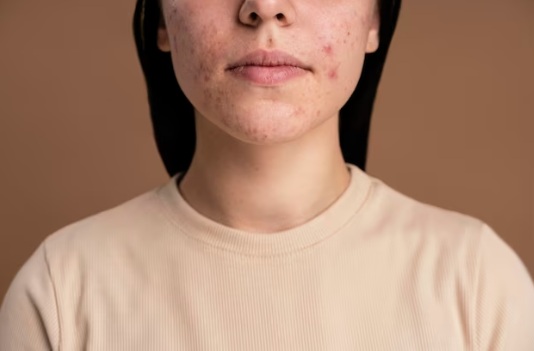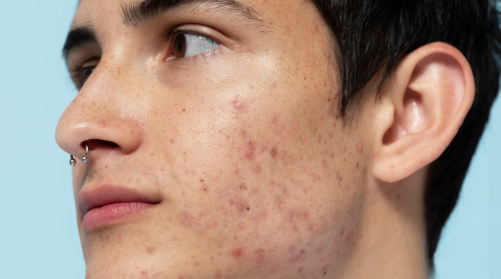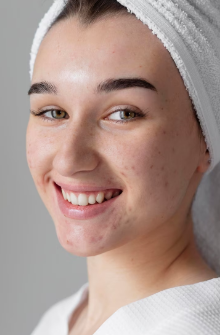
Acne is a difficult condition to face, and even once it’s gone, you may be left with unwanted reminders of its appearance. Acne scars result from cysts or nodules forming under the skin and can vary in severity from small marks to indentations or pockmarks that are difficult to cover up. While there’s no one-size-fits-all solution for scarring, understanding how acne scars form and developing an effective treatment plan can help improve your overall quality of life. This post will explore types of acne scars and today’s common treatments. Look no further at Sozo Aesthetic Clinic!
What Are Acne Scars?
Acne appears on the face, chest, upper back and shoulders. It causes inflammation of the skin resulting in redness, swelling and tenderness. Sometimes, it can lead to painful cysts or nodules that can be deep and hard.
If too much sebum is produced, it builds up in the pores and combines with dead skin cells to form a sticky plug that blocks the pore. This clogged pore increases the number of skin bacteria, resulting in acne. When left untreated, acne can cause scarring.
Acne scars occur because of the damage to the collagen and elastin, the connective tissues that provide structure and strength to our skin. Scarring is natural when the body tries to repair a wound by producing more collagen as part of its healing process. Its result refers to the different kinds of acne scars.
1. Atrophic or Depressed Scarring
An atrophic scar is a type of scarring that occurs when the body fails to produce enough collagen in the affected area. This results in depressions or sunken areas in the skin, giving it a pitted appearance. The depressed scars appear as pale or flat spots on the skin, which may be slightly raised at times. They are firm to the touch and can be of varied sizes. The colour of depressed scarring can range from white to pink, purple, and even brown.
- Ice Pick Scars
Ice pick scars appear as deep, narrow, pitted holes in the skin. These atrophic scars appear like holes or punctures created by an ice pick and can range from pinheads to large size pockmarks.
- Boxcar Scars
Boxcar scars appear as shallow to deep depressions with sharp vertical edges in the skin. The size of boxcar scars can vary from small to large, and they give an uneven or pitted texture to the skin.
- Rolling Scars
Rolling scars appear as wavy or rolling depressions with sloping edges that give the skin an uneven texture and appearance.
Which type of treatment is needed:
Atrophic acne scars are best treated with treatments that stimulate collagen and elastin production in the skin, including laser resurfacing, microneedling, chemical peels, and radiofrequency devices. Laser and light therapies can also help reduce redness or discolouration associated with atrophic acne scars. In addition, fillers can be injected to help reduce the appearance of shallow boxes or pits in the skin from atrophic acne scars.
2. Raised Scarring

Raised scarring is the result of thick collagen deposits which are raised above the surface of the skin. They usually have a reddish hue compared to normal scarring and are often quite lumpy or bumpy to the touch. Raised scarring is usually caused by an abnormal healing process, resulting in collagen overproduction. It can be a hypertrophic or keloid scar.
- Hypertrophic Scars
Hypertrophic scars are typically red in colour and caused by excess collagen production at the site of a wound. The overproduction of collagen can lead to raised, thickened scars that don’t extend beyond the boundaries of the original pimple.
- Keloid Scars
Keloid scars have a bumpy, raised appearance and are usually darker in colour than hypertrophic scars. The scar tissue can spread beyond the original wound or pimple and be difficult to treat due to its aggressive nature.
Which type of treatment is needed:
Raised scars can be treated with steroid injections, laser treatment or surgery. Steroid injections are used to reduce inflammation and flatten the scar tissue. Laser treatments can also help reduce scarring by breaking the excess collagen and smoothing the skin. Surgery is for more severe cases of raised scars, which involves removing the excess scar tissue and stitching up the wound. For keloid scars, silicone gel sheets or tape may help flatten the area and reduce inflammation. Other treatments, such as cryotherapy, laser resurfacing, and radiation therapy, can also treat raised scars.
3. Post-Inflammatory Hyperpigmentation

Post-inflammatory hyperpigmentation (PIH) develops dark spots or patches due to an inflammatory response such as acne. The spots are usually flat and can range in colour from light brown to black. They appear due to the inflamed skin caused by acne.
Which type of treatment is needed:
Creams with hydroquinone, retinoids, and other agents that can lighten the skin are usual treatments for PIH. Chemical peels, laser treatments, and microneedling can also help reduce the appearance of PIH. Sunscreen is also important to protect the skin from further hyperpigmentation. Additionally, it’s important to avoid picking or squeezing any pimples, as this can cause further inflammation and worsen PIH.
Takeaway
Acne scars are a difficult and sometimes embarrassing fact of life for many people. But, instead of allowing it to impact your self-confidence, take proactive steps to understand your scarring. From laser procedures and micro-needling to topical creams, today’s treatment options are becoming more effective and less invasive. With patience, determination, and modern science, you can clear up the remainder of acne and reclaim your confidence.

